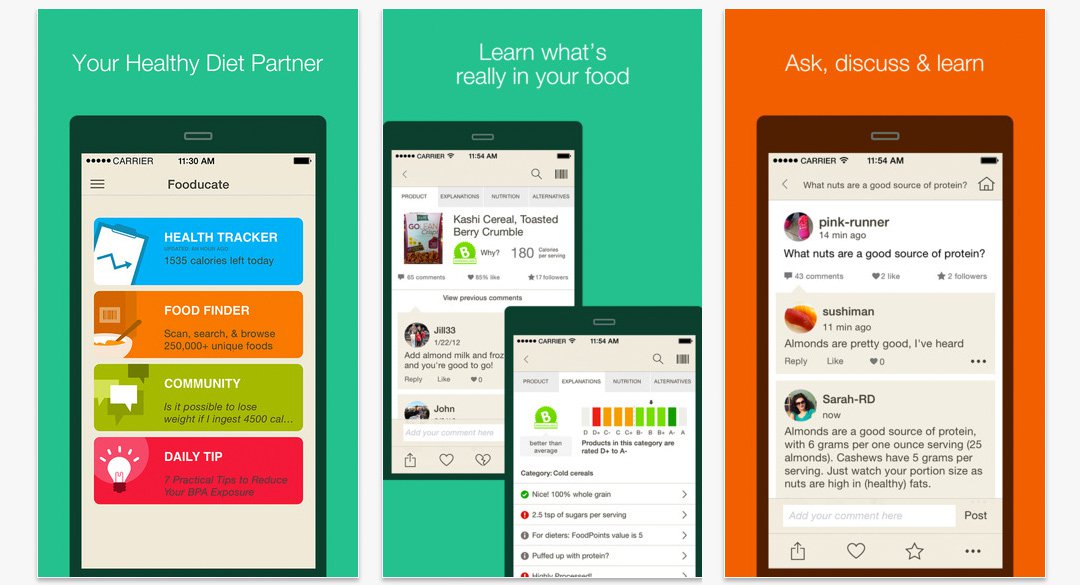12 Nutritional Hacks for Everyday Healthy Eating

In a perfect world, we’d all be eating delicious, balanced meals every day. But hectic lifestyles mean time constraints and a host of misinformation–massive hurdles to ensuring you’re eating right. Have hope: These 12 nutritional hacks will arm you with the realistic dietary coping mechanisms you need to ensure you’re achieving optimal nutrition.
1. Divide and Conquer
Pinpoint which meal is giving you the most trouble and focus on fixing that first. Skipping breakfast regularly? Set your alarm clock five minutes earlier and incorporate a variety of quick and healthy breakfasts into your repertoire. Eating greasy takeout during the day? Start packing lunches the night before. Always eating out for dinner? Get good at a handful of healthy, easy recipes and start cooking at home.
2. Keep Dietary Staples on Hand
Stock healthy staples like brown rice, lentils, quinoa, and canned salmon, tuna, or sardines in your pantry. And keep greens in your refrigerator and frozen vegetables in your freezer for quick and nutritious meals in a pinch. Using whole, local ingredients means you have to do less to make them taste delicious, ultimately saving you time in the kitchen.
3. Cook Once, Eat Twice (or More)
Think beyond the meal you’re about to eat. Get into the habit of making extra brown rice, quinoa, or lentils while you’re preparing meals so you have those ingredients on hand as a quick and easy add-on to any other proteins and vegetables you prepare later in the week.
4. Memorize the Healthy Meal Formula: P+F+C
Know what you need for a balanced meal before you start to prepare. Include a lean protein, a (preferably) leafy vegetable with healthy fats, and a complex carbohydrate. Apply this formula to your favorite foods and you’ve got a balanced meal.
5. Get Techy with It
Apps like Farmstand and Fooducate simplify healthy grocery shopping and meal planning. Use Farmstand’s database of over 8,000 farmers’ markets to see what’s fresh and in season near you. Fooducate lets you scan the barcode on items and grades their healthiness from A to F, with explanations of their benefits and pitfalls.
6. Shop the Perimeter
As a rule of thumb at the grocery store, stick to the perimeter, where you’ll find the sections for fresh produce; meat, poultry and fish; and dairy. Sticking to this footpath not only ensures a quicker shopping experience, but it also means your meals will center around fresh ingredients and whole foods, which are generally much healthier for you than the packaged, processed foods you’ll find in your grocer’s center aisles.
7. Save Time with Grab-and-Go
Really short on time? Pick up prepared grains, legumes, and lean proteins like chicken from your grocer’s freezer section and defrost at home, or grab these staples from the salad bar.
8. Hit the Sauce
Sauces add tons of flavor to any meal without piling on fat and calories. Simple, healthy combinations like sundried tomatoes pureed with olive oil, Dijon mustard, dill, and olive oil, or a simple basil, pine nut, and olive oil pesto are fast, healthy, and easy to make. Just add a lean grilled, broiled, or poached protein of your choice, and you’re all set.
9. Invest in Time-Saving Tools
A hand blender and a standard blender are great tools for preparing healthy and flavorful sauces and soups. Make big batches and freeze leftovers so you’ll always have healthy meal options available even if you’re too tired to cook.
10. Sub in a Nutritional Power Player
Replace some of your favorite staples with healthier options. Instead of mashed potatoes, make pureed cauliflower or parsnips. Substitute French fries with baked rutabaga fries. Shred vegetables into noodles using a spiralizer to make low-carb, low-calorie zucchini noodles or nutrient-rich sweet potato noodles, and sub them for spaghetti in your favorite pasta dishes.
11. Zip It Up
Pre-portion single servings of healthy snacks like almonds, edamame, and whole-grain crackers into zippered snack bags. Then when it’s time to pack your lunch or satisfy a mid-afternoon hunger pang, you’ll have exactly the right amount at your fingertips, and you won’t end up mindlessly snacking.
12. Be a Sugar Sleuth
To interpret the sugar content in any packaged product, simply divide the sugars (listed in grams) by four to get a visual of the number of teaspoons of sugar you’d be consuming. For example, 12 grams of sugar is the equivalent of 3 teaspoons of sugar. While food labels are scheduled to change, and will highlight added sugars, it’s still important to understand just how much total sugar food products contain.
The One Medical blog is published by One Medical, a national, modern primary care practice pairing 24/7 virtual care services with inviting and convenient in-person care at over 100 locations across the U.S. One Medical is on a mission to transform health care for all through a human-centered, technology-powered approach to caring for people at every stage of life.
Any general advice posted on our blog, website, or app is for informational purposes only and is not intended to replace or substitute for any medical or other advice. 1Life Healthcare, Inc. and the One Medical entities make no representations or warranties and expressly disclaim any and all liability concerning any treatment, action by, or effect on any person following the general information offered or provided within or through the blog, website, or app. If you have specific concerns or a situation arises in which you require medical advice, you should consult with an appropriately trained and qualified medical services provider.
